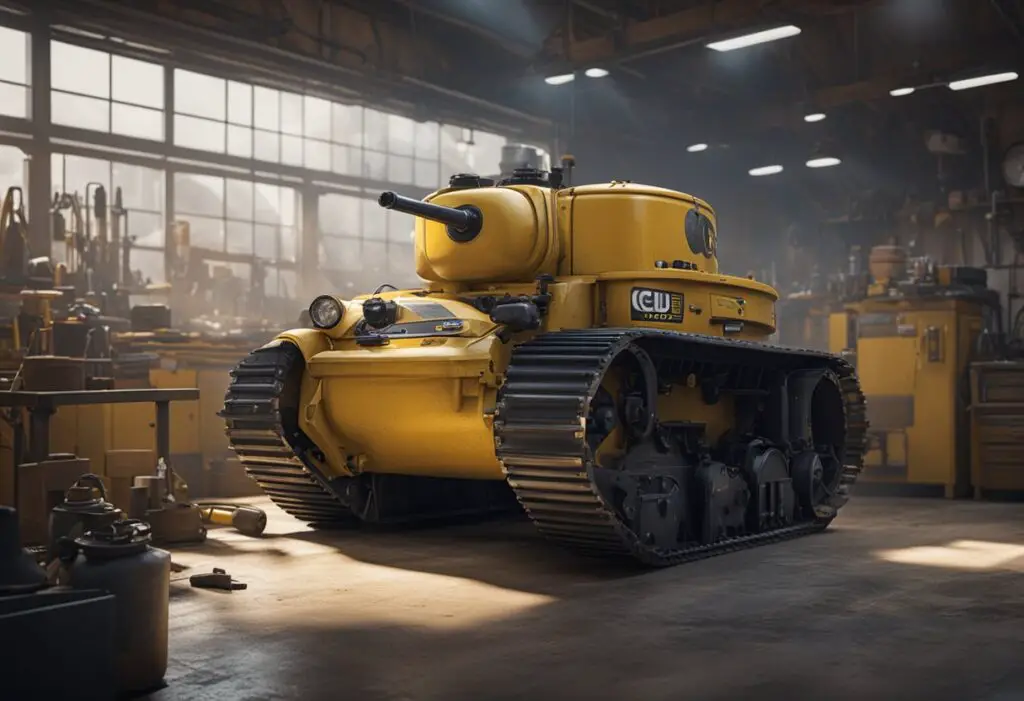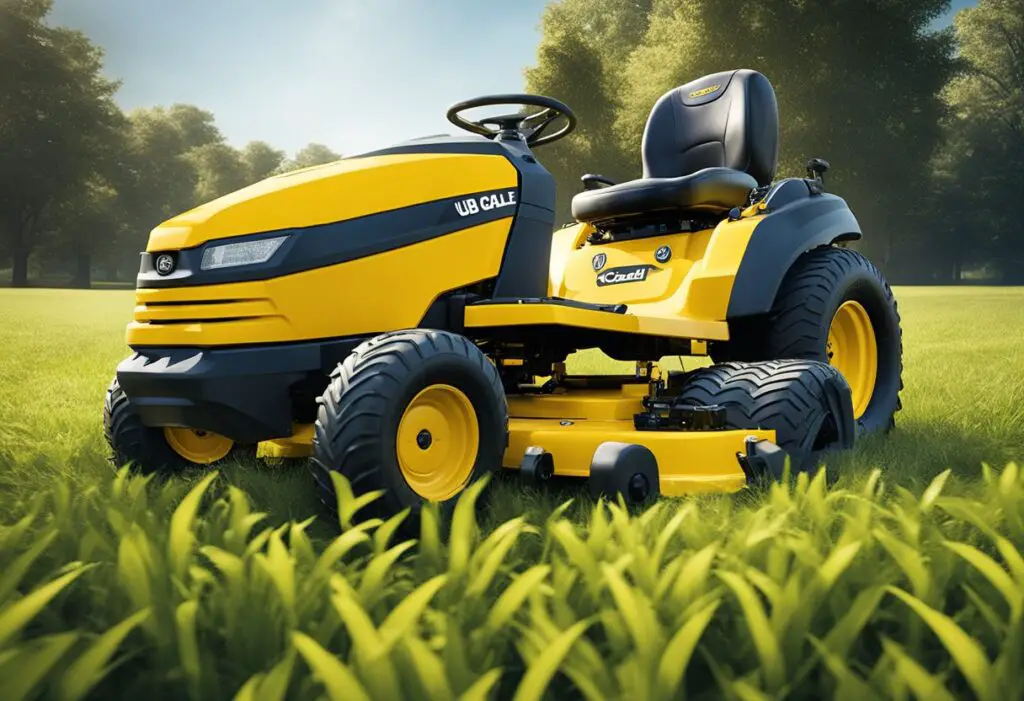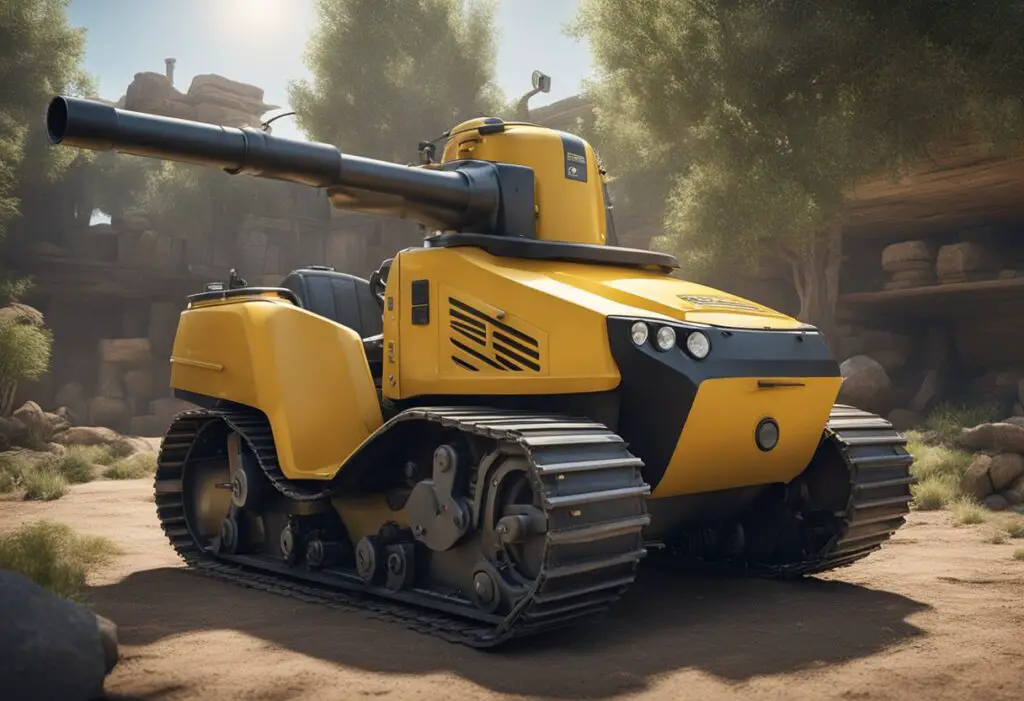The Cub Cadet Tank M60 is a popular commercial-grade zero-turn mower designed to handle large areas of grass with ease. However, like any other machine, it can develop problems over time that may cause it to malfunction. In this article, we will discuss some of the most common Cub Cadet Tank M60 problems and how to troubleshoot and diagnose them.

One of the most common problems with the Cub Cadet Tank M60 is engine starting issues. The engine may fail to start, or it may start but keep stalling. Another problem is uneven cutting, where the mower may leave patches of uncut grass or cut unevenly. Transmission issues are also common, where the mower has difficulty in moving forward or reverse, or it may get stuck. By understanding these common issues, owners of Cub Cadet Tank M60 can troubleshoot and diagnose them with ease.
In the following sections, we will discuss each of these problems in detail and provide easy solutions to fix them. We will also cover other common problems that may arise with the Cub Cadet Tank M60 and how to diagnose them. By the end of this article, readers will have a better understanding of the common issues that may arise with the Cub Cadet Tank M60 and how to fix them.
Engine and Starting Issues
The engine and starting issues are some of the most common problems that Cub Cadet Tank M60 owners face. These issues can be caused by a variety of factors, ranging from a dead battery to a faulty ignition switch. In this section, we will discuss some of the most common engine and starting issues that you may encounter with your Cub Cadet Tank M60, as well as some troubleshooting tips to help you resolve them.
Troubleshooting Engine Failure
If your Cub Cadet Tank M60 is experiencing engine failure, there are several potential causes to consider. One of the most common causes of engine failure is a faulty spark plug. A dirty or faulty spark plug can prevent the engine from starting or cause it to stall shortly after starting. To resolve this issue, you should replace the spark plug and ensure that it is properly gapped.
Another potential cause of engine failure is a damaged carburetor. A damaged carburetor can prevent the engine from receiving the proper fuel mixture, which can cause it to stall or run poorly. If you suspect that your carburetor is damaged, you should have it replaced by a qualified technician.
Ignition System Complications
The ignition system is another common area where problems can occur. If your ignition switch is faulty, it can prevent the engine from starting or cause it to stall shortly after starting. To fix this issue, you should replace the ignition switch and ensure that all wiring connections are clean and undamaged.
Fuel System Maintenance
The fuel system is another area where issues can occur. If your Cub Cadet Tank M60 is experiencing starting issues, you should check the fuel level and ensure that the fuel is not old or contaminated. You should also check the air filter and ensure that it is clean and free of debris. A dirty air filter can prevent the engine from receiving the proper air flow, which can cause it to run poorly or stall.
In conclusion, engine and starting issues can be frustrating to deal with, but they are typically easy to diagnose and resolve. By following the troubleshooting tips outlined in this section, you should be able to resolve most starting and engine issues with your Cub Cadet Tank M60.
Electrical and Battery Complications
Battery and Connection Issues
The Cub Cadet Tank M60 is a powerful machine that requires a reliable source of power to operate smoothly. Battery and connection issues can cause serious problems that can affect the performance of the machine. One common issue is a dead battery, which can occur due to various reasons, such as leaving the lights or accessories on when the engine is off or a faulty charging system.
To avoid battery issues, it is recommended to perform regular maintenance and checks on the battery and connections. This includes checking the battery terminals for corrosion, tightening the connections, and ensuring that the battery is fully charged before use. If the battery is dead, it is important to replace it with a high-quality battery that is compatible with the Cub Cadet Tank M60.
Electrical System Malfunctions
The Cub Cadet Tank M60 has a complex electrical system that can malfunction due to various reasons, such as a faulty ignition switch, wiring harness, electrical connection, or fuses. If the electrical system malfunctions, it can cause various problems, such as the engine not starting, the mower deck not engaging, or the lights not working.
To troubleshoot electrical system malfunctions, it is recommended to use a multimeter to check the voltage and continuity of the wires and connections. Loose wires and faulty connections should be repaired or replaced immediately to avoid further damage to the electrical system. It is also important to check the fuses and replace them if they are blown.
Regular maintenance and checks of the electrical system can help prevent malfunctions and ensure that the Cub Cadet Tank M60 operates smoothly. It is recommended to follow the manufacturer’s guidelines for maintenance and repairs to avoid any potential problems.
Transmission and Hydraulic Concerns

Transmission Fluid and Gears
The Cub Cadet Tank M60 is known to have transmission problems, such as slipping gears, difficulty shifting gears, or leaking fluid. These issues can cause your lawn mower to stall, refuse to start, or cut unevenly. To resolve these issues, it is essential to check the transmission fluid levels regularly. Low fluid levels can cause slipping gears, poor acceleration, and other transmission and drive system problems.
If you notice any issues with the transmission, it is recommended to change the transmission fluid and filter. You can buy the fluid filter replacement parts from their official websites and install them with instructions. This can help to fix the transmission problems and improve the overall efficiency of the drive system.
Hydraulic System Efficiency
The hydraulic pump is a crucial component of the Cub Cadet Tank M60, and it is responsible for powering the mower’s movement and blade engagement. If you notice any issues with the hydraulic system, such as chattering or jerky movement, especially under load, it may be a sign that the hydraulic pump is at the end of its life.
To resolve these issues, it is essential to check the hydraulic fluid levels regularly. Low hydraulic fluid levels can cause slipping gears, poor acceleration, and other hydraulic issues. If your Cub Cadet Tank M60 got stuck for hydraulic issues, you need to change the fluid and filter.
It is also recommended to inspect the drive belt regularly for any signs of wear and tear. A worn-out drive belt can cause poor hydraulic system efficiency and slipping gears. Replacing the drive belt can help to improve the hydraulic system’s efficiency and prevent future problems.
Cutting Deck and Blade Performance

The cutting deck and blade performance of the Cub Cadet Tank M60 is crucial for maintaining a well-manicured lawn. A poorly performing deck and blades can result in uneven cutting, poor performance, excessive vibration, and other issues. Here are some tips for maintaining and troubleshooting the cutting deck and blade performance of your Cub Cadet Tank M60.
Deck Alignment and Maintenance
The cutting deck of the Cub Cadet Tank M60 should be aligned and maintained properly to ensure optimal performance. Misaligned decks can cause the mower to cut unevenly, and poor maintenance can lead to premature wear and tear of the deck and blades. Here are some tips for deck alignment and maintenance:
- Check the deck belt tension and replace if necessary. A loose or worn-out belt can cause the blades to spin inconsistently.
- Lubricate the pulleys and bearings regularly to prevent excessive friction and wear.
- Check the deck for any damage or cracks, and replace if necessary.
- Follow the manufacturer’s maintenance schedule for deck cleaning, blade sharpening, and other maintenance tasks.
Blade Sharpness and Balance
The blades of the Cub Cadet Tank M60 should be sharp and balanced to ensure a clean cut. Dull blades can cause the mower to cut unevenly and leave behind jagged edges, while unbalanced blades can cause excessive vibration and damage to the mower. Here are some tips for blade sharpness and balance:
- Sharpen the blades regularly using a sharpening tool or file. A sharp blade will cut through grass more cleanly and efficiently.
- Check the blade balance using a blade balancer. An unbalanced blade can cause excessive vibration and damage to the mower.
- Replace the blades if they are damaged, worn out, or bent.
- Ensure that the safety switch is engaged before removing or replacing the blades.
By following these tips, you can ensure that your Cub Cadet Tank M60’s cutting deck and blades are performing optimally, resulting in a well-manicured lawn.
Frequently Asked Questions

What are common engine issues with the Cub Cadet Tank M60?
A common engine issue with the Cub Cadet Tank M60 is difficulty in starting the engine. This can be caused by a variety of factors, including stale or contaminated fuel, a faulty ignition switch, or a dead battery. Another issue is the engine stalling or running unevenly, which can be caused by a dirty air filter, a clogged fuel filter, or a malfunctioning carburetor.
How can I troubleshoot starting problems in a Cub Cadet Tank M60?
To troubleshoot starting problems in a Cub Cadet Tank M60, start by checking the fuel tank to ensure it is filled with clean, fresh gasoline. If the fuel is stale or contaminated, it can prevent the engine from starting. Next, check the battery to make sure it is fully charged and in good condition. If the battery is dead, the engine may not start. Finally, inspect the ignition switch for any signs of damage or wear.
What should I check if the Cub Cadet Tank M60 has cutting performance issues?
If the Cub Cadet Tank M60 has cutting performance issues, start by checking the blades to ensure they are sharp and in good condition. Dull or damaged blades can cause the mower to leave patches of uncut grass or cut unevenly. Next, check the air filter to make sure it is clean and free of debris. A dirty air filter can reduce engine performance, which can affect cutting performance. Finally, check the deck to make sure it is level, as an uneven deck can cause cutting issues.
Are there any known transmission problems with the Cub Cadet Tank M60?
Yes, there are some known transmission problems with the Cub Cadet Tank M60. These can include difficulty shifting gears, slipping gears, or leaking fluid. These issues can cause the mower to stall, refuse to start, or cut unevenly.
How can I resolve fuel system troubles in the Cub Cadet Tank M60?
To resolve fuel system troubles in the Cub Cadet Tank M60, start by checking the fuel tank to ensure it is filled with clean, fresh gasoline. If the fuel is stale or contaminated, it can prevent the engine from starting. Next, check the fuel filter to make sure it is clean and free of debris. A clogged fuel filter can cause the mower to stall or run unevenly. Finally, check the carburetor to make sure it is clean and functioning properly.
What maintenance tips can prevent common issues with the Cub Cadet Tank M60?
To prevent common issues with the Cub Cadet Tank M60, it is important to perform regular maintenance. This includes changing the oil and oil filter at least once a year, checking the air filter and cleaning or replacing it as needed, inspecting the blades and sharpening or replacing them as needed, and checking the tire pressure regularly. It is also important to store the mower in a dry, sheltered area to prevent rust and corrosion.

Leave a Reply